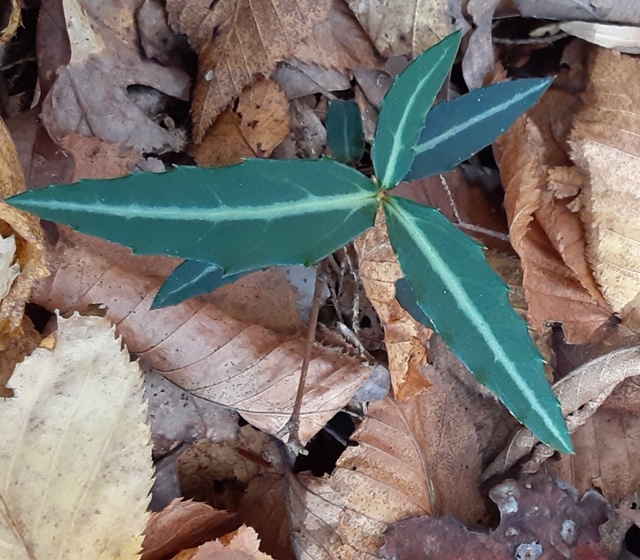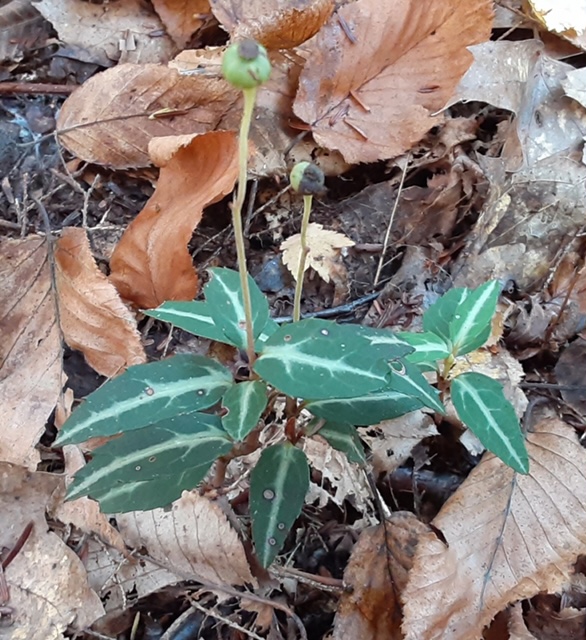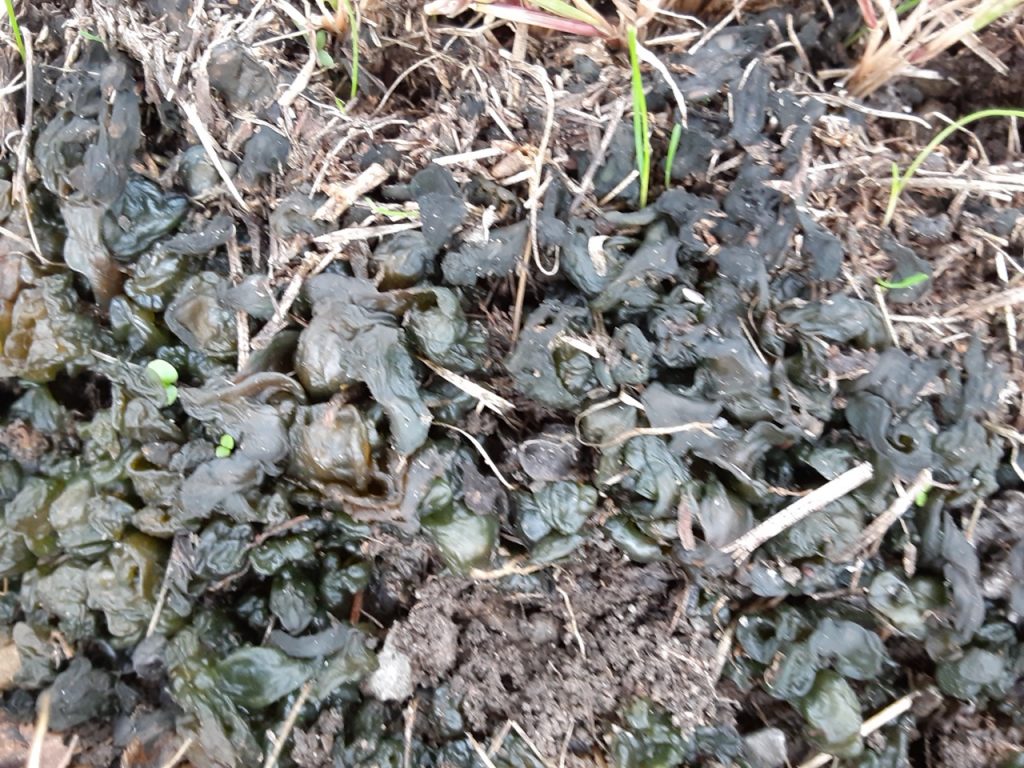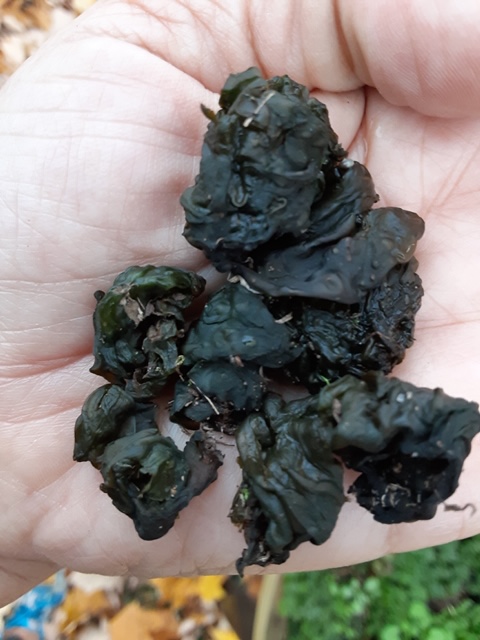By: Susan Sprout
Find out what’s underfoot with NPC member and environmental educator, Susan Sprout! Catch up on past issues of Underfoot: Introduction & Bloodroot, Trout Lily & Coltsfoot, Blue Cohosh & Dutchman’s Breeches, Ground Ivy & Forget-Me-Nots, Goldthread & Wild Ginger, Common Mullein & Sweet Woodruff, Aniseroot & Butterfly Weed, Myself , Jewelweed & Soapwort, American Pennyroyal & Great Lobelia, Boneset & Common Ragweed, Pokeweed & Blue Chicory, Prickly Cucumber & Wintergreen, Beech Drops & Partridge Berry.
Pipsissewa, aka Spotted Wintergreen
This beautiful little native plant popped into view on a hike last week. Its shiny dark green leaves with white mid-ribs really stood out in the leaf litter of the oak – pine woods.

Pipsissewa is a member of the Shinleaf family. I have found six common names for it, and by their use, they could mistakenly place it in three totally different families. That is one good reason to use scientific names to identify plants! Chimaphila maculata is Greek for “winter-loving” and “spotted” which seems appropriate for an evergreen plant with the white blotches on its leaves. Small, creamy-white blossoms with five petals appear on a single eight-inch stem above the leaves in July and August. After the nodding clusters have been pollinated by insects, seed capsules begin to form that will contain seeds to be dispersed by the wind.

Pipsissewa is native to eastern North America and Central America. It grows from Canada, where it is endangered, all the way south to Panama. The word Pipsissewa comes from the Creek language and means “breaks into small pieces” for its medicinal properties because it was used to treat bladder stones. Science confirms diuretic and antibacterial activity.
Nostoc, aka Star Jelly
Ever heard of Nostoc? I hadn’t. What a shock to find out the handful of gummy, convoluted globules I found growing in a drainage ditch didn’t just fall from the sky overnight! It wasn’t there…it rained…it was there!

A plant not in any of my books. Its greenish color told me it had chlorophyll and would make its own food and give off oxygen. This amazing find is a kind of cyanobacteria, or blue-green algae, with microscopic filament-shaped colonies enclosed in gelatinous sheaths. Nostoc can be bluish-green, olive green, or brown; but, in dry conditions, it becomes an inconspicuous, crisp, brownish mat, not unlike the desiccated dog poo I mistook it for. Wet from rain, it plumped up and became more visible.
It has been growing on earth for about 3.5 billion years. It grows everywhere from Arctic regions to deserts. Its nitrogen fixing cells make it useful on reclamation sites by making the soil better for what will grow next. The chloroplasts containing chlorophyll in our plants today have their origins with cyanobacteria. Without them, our plants wouldn’t exist. We wouldn’t either.

Besides living through repeated patterns of freezing and thawing, it can survive intense solar radiation. It has survived numerous mass extinctions. It was once thought to have fallen from the sky, hence the common name Star Jelly. Maybe it hitched a ride on a meteorite!

